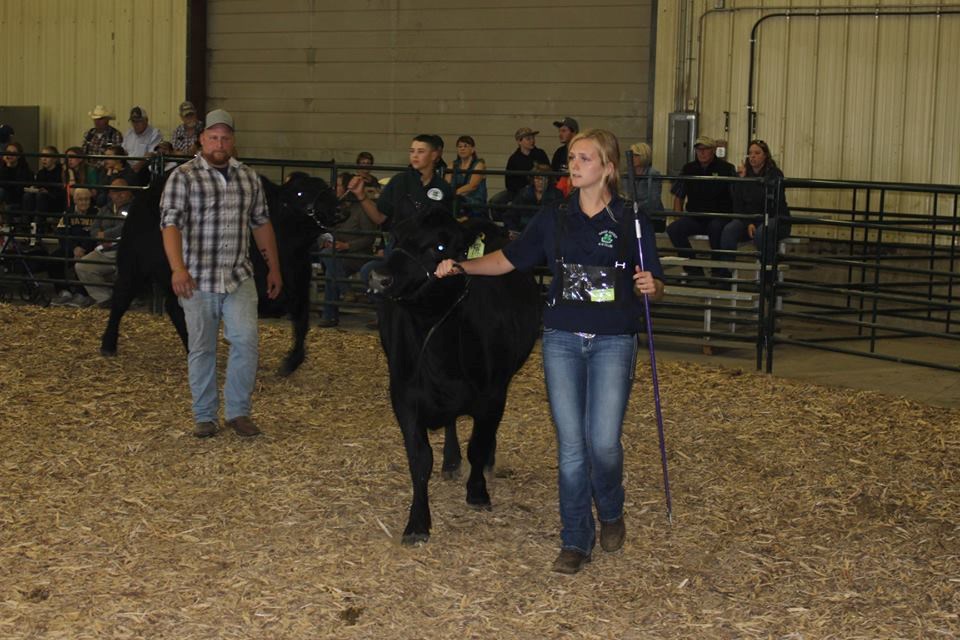The quality of cattle at the 2018 edition of the Yorkton Regional 4-H Show was very good according to show judge Ryan Hurlburt.
“It’s a quality 4-H regional show,” said the judge on the noon break from picking the red ribbon winners in various classes Wednesday morning. “… The quality’s been fine.”
Hurlburt said the champion and reserve females of course stood out.
“They were a very strong pair of heifers,” he said, adding they were put together in a similar way showing length and capacity to become good cows.
The annual show, held as part of the annual summer fair in the city attracted eight area 4-H clubs with members showing 78 steers, and 44 females.
In addition there were 19 ‘cloverbud’ participants, members who are just starting out in 4-H and are ages six-to-eight.
In terms of judging, Hurlburt said he looks at the animals in the show ring from “a diverse background in cattle.”
Hurlburt said he is a “fourth generation livestock producer,” who grew up on the family farm where they run a cow/calf operation of purebred Angus and Gelbvieh, as well as commercial animals among the 200-cows.
In addition to working with cattle growing up, Hurlburt has sharpened his eye for cattle as an auctioneer currently with Saskatoon Livestock Sales which sells some 100,000 head of cattle annually, but also with two years at HeartlandLivestock in Yorkton. In 2016 he won the LMAC Canadian Livestock Auctioneer Championships.
So what does the varied experiences in the cattle industry have Hurlburt looking for from the 4-H cattle in the Yorkton ring?
The answer depends on the class.
“What’s important for females, it starts with structural soundness. I always say cows need to be sound from the ground,” he said.
After ensuring a cow has the feet and legs to walk a pasture all summer for a number of years, Hurlburt then looks for other things in a female.
For example, he said a female needs “some rib shape” that shows the capacity for a calf to develop.
And of course beef cattle are raised to produce beef so the females need to show some muscling as well, said Hurlburt.
In the case of a cow/calf pair Hurlburt said he gets to see what the cow is producing in terms of a calf, adding at this time of year the cow scores about 70 per cent in his mind, and the calf 30 per cent. In the fall as the calf grows it takes on a more important role in terms of picking the best pair, edging closer to 40 per cent of the decision.
With steers, it really comes down to the beef the animal should yield when it goes to market, in the case of a show such as Yorkton they head to slaughter at day’s end.
“As far as structure and muscle that doesn’t change,” said Hurlburt, but the importance of feet and legs is reduced since they have made it essentially as far as they need to carry the animal.



